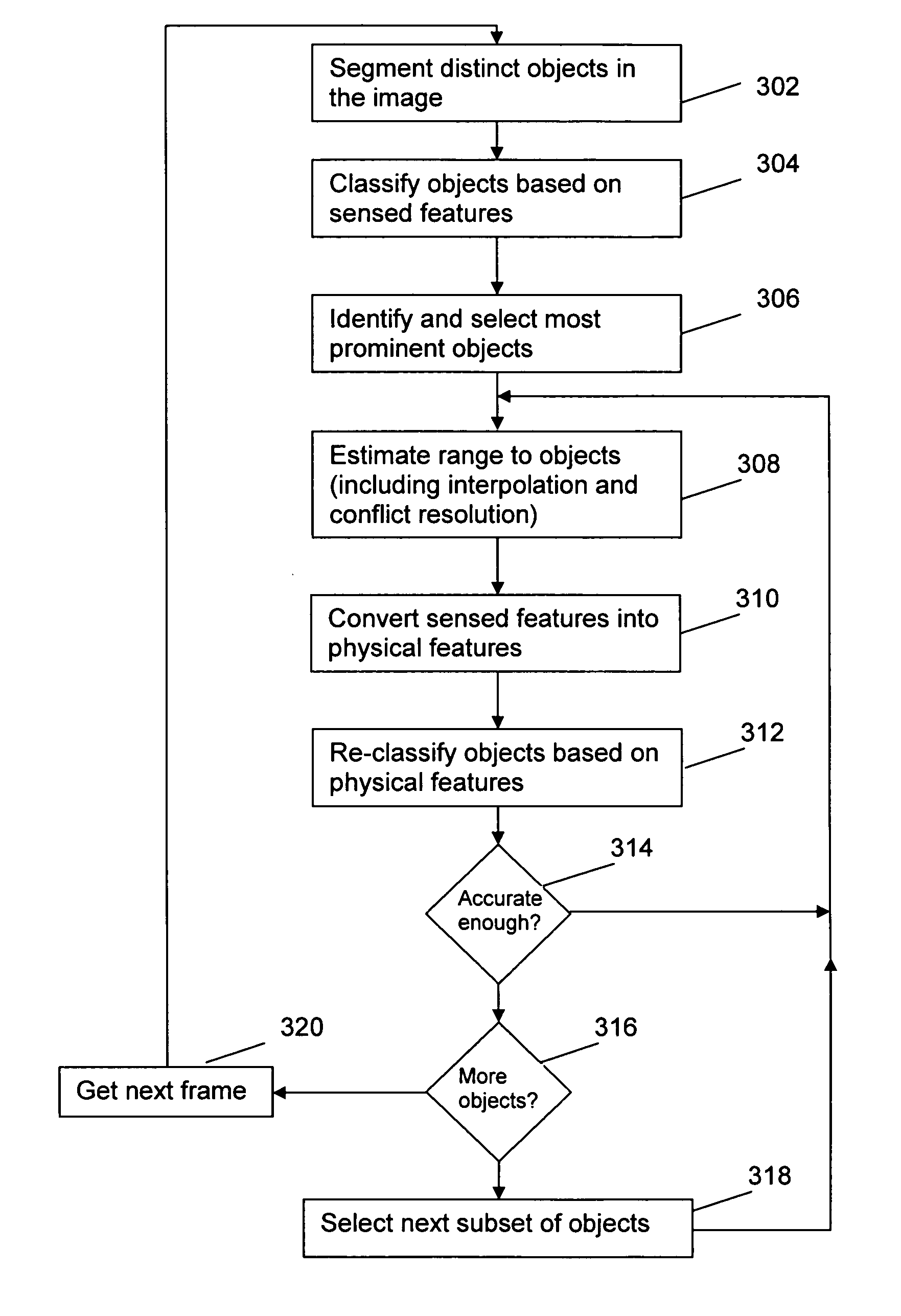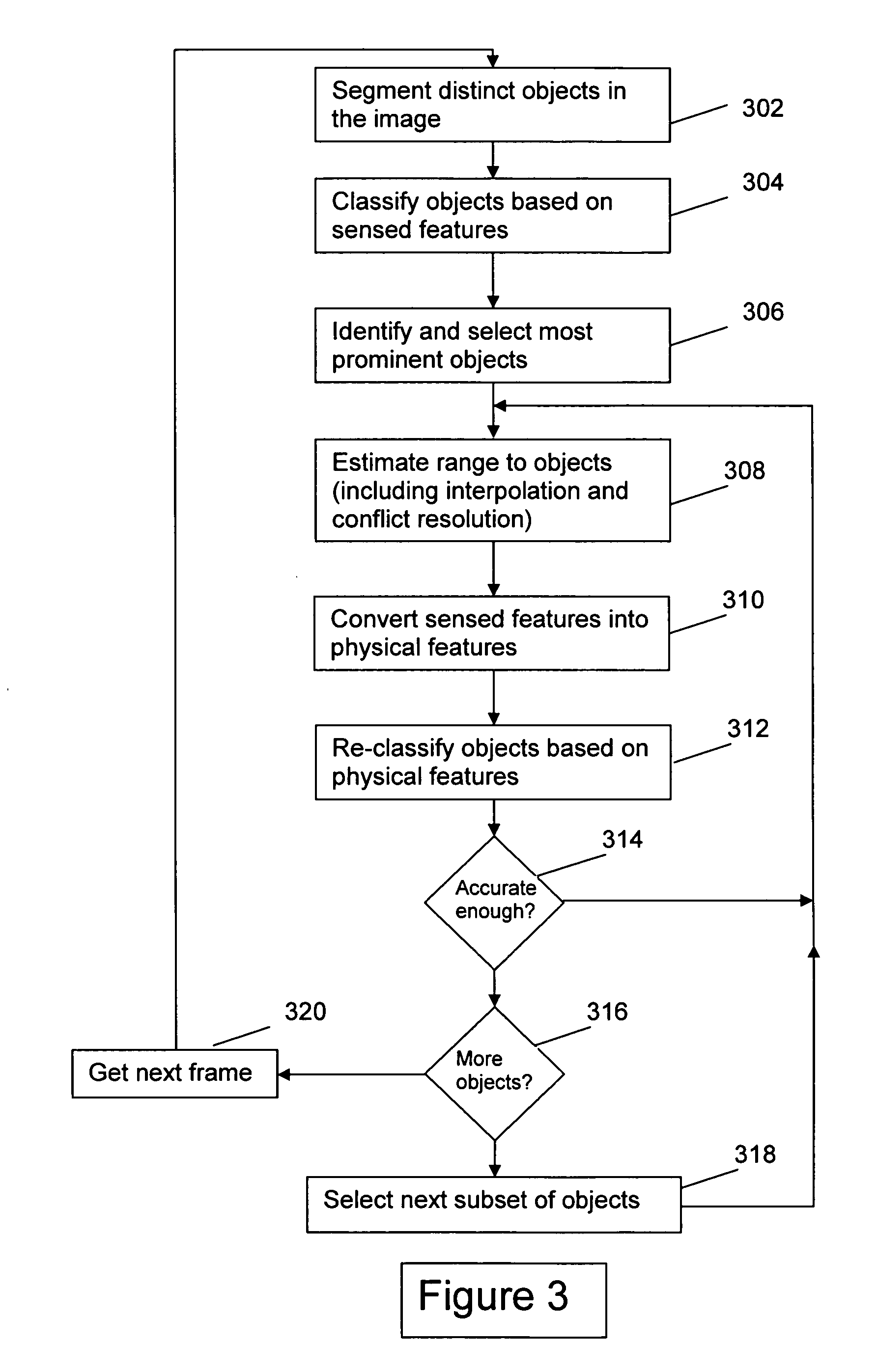Method and apparatus for identifying physical features in video
a physical feature and video technology, applied in the field of methods and apparatus for identifying physical features in video, can solve the problems of less reliable estimation, less accurate, and less reliable passive ranging, and achieve the effect of increasing accuracy and reliability
- Summary
- Abstract
- Description
- Claims
- Application Information
AI Technical Summary
Benefits of technology
Problems solved by technology
Method used
Image
Examples
Embodiment Construction
[0021] The present invention is a method and apparatus for processing image data in order to recognize and identify objects within an image, including multiple-frame video images. The key aspects of the present invention focus on the technique for classifying objects, either moving or stationary, and determining their range. The invention can be implemented through software loaded on a computing device, such as a microprocessor, processor, or PC. It can be embodied within a video surveillance system or separately connected to a video surveillance system. Alternately, the invention can be implemented by any other reasonable means including an application specific integrated circuit (ASIC), digital hardware, or any combination of the aforementioned.
[0022]FIG. 1 is a block diagram showing the major components of a video surveillance system 101 within which the present invention is incorporated. The system comprises one or more cameras 104 that output digital images of one or more surv...
PUM
 Login to View More
Login to View More Abstract
Description
Claims
Application Information
 Login to View More
Login to View More - R&D
- Intellectual Property
- Life Sciences
- Materials
- Tech Scout
- Unparalleled Data Quality
- Higher Quality Content
- 60% Fewer Hallucinations
Browse by: Latest US Patents, China's latest patents, Technical Efficacy Thesaurus, Application Domain, Technology Topic, Popular Technical Reports.
© 2025 PatSnap. All rights reserved.Legal|Privacy policy|Modern Slavery Act Transparency Statement|Sitemap|About US| Contact US: help@patsnap.com



